A DESTINY THAT HE WROTE
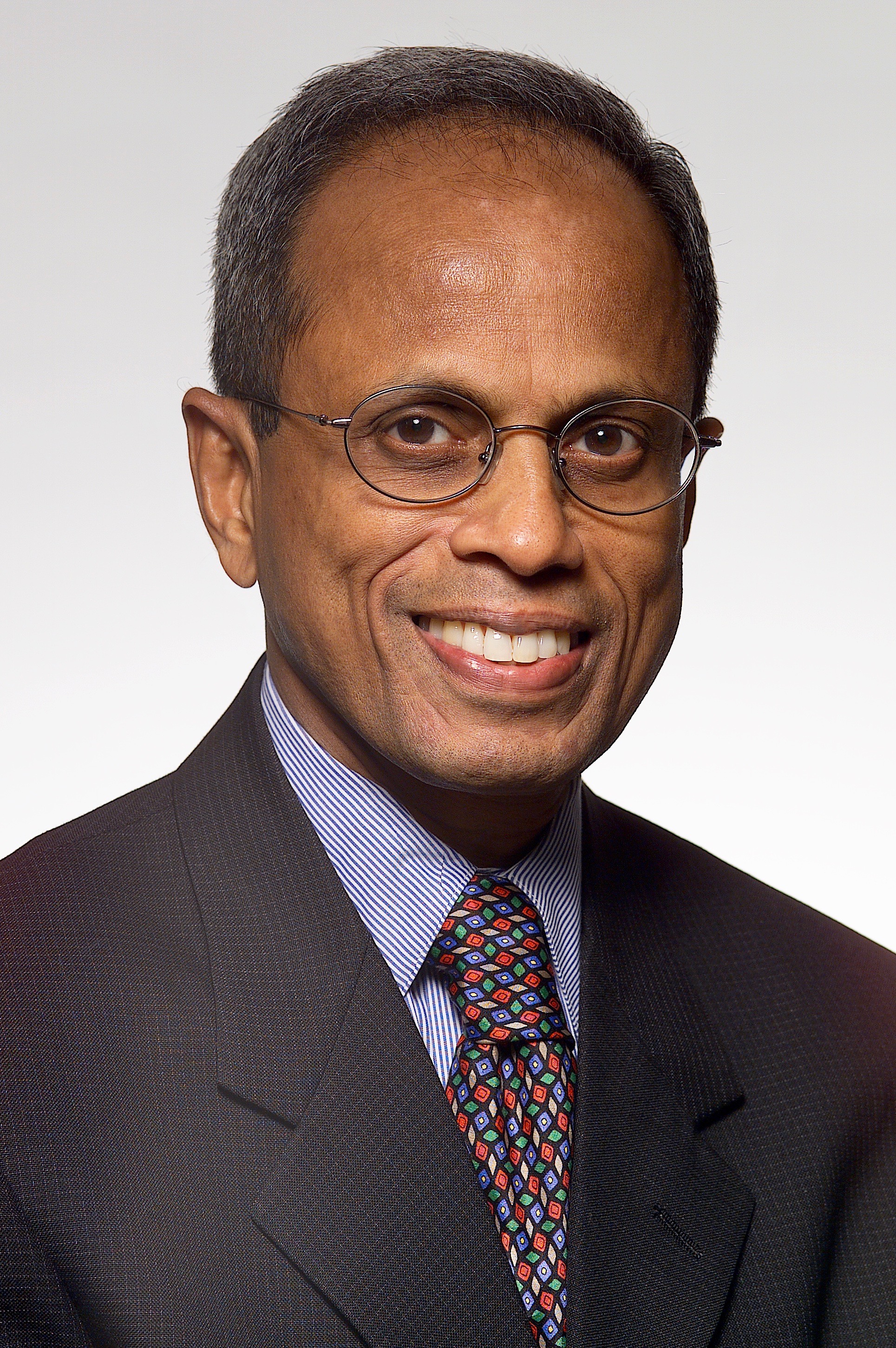
Nat Yogachandra
This is my humble story. It is not a history, but the story of my heart. I have looked at my life with the perspective of a painter inspired by the will of God rendering a self-portrait.
The coastal town of Batticaloa in the eastern part of Ceylon renamed Sri Lanka in 1973, is about 100 kilometers from the capital city, Colombo. It was very serene and a peaceful place. This was my home town. My parents always emphasized school as my first priority. My mother Madam Thayanithi Natarajah wanted me to get a government job, but my father Mr. K. S. Suppiah Natarajah believed I also needed to develop a strong work ethic and do community service. In other words, he wanted me to become a doctor. But, I myself had no exact idea of what I wanted to become when I finished my education at the St. Michael’s College, a college administered by Jesuits priests. Perhaps I just wanted to spend more time with my friends, spending my time along those beautiful beaches eating raw mangoes with a touch of salt and sugar or becoming a businessman and philanthropist like my dad.
But, a series of events and experiences in my life in 1968, changed so dramatically and all added up to become the framework for the rest of my life. How could I have ever predicted that a decision I made in that year would have given me a new dimension in life? That was a decision to accept the Faith of Bahá’u’lláh and leave my fate in His hands and let the Divine Will lead me in my journey.
I was the third child in the family of Tamil descendants. My siblings and I (one sister and six brothers) were brought up in a very loving household. We had a comfortable life. My father was a successful businessman. He owned a few hundred acres of paddy fields and was a vendor for the cooperative stores in the province supplying rice. He had several buildings from which he was collecting rent. He also owned a photo studio and distributor for several appliances, such as sewing machines and ceiling fans for the entire Eastern Province. My father was a well-respected member of the community. He was a Justice of Peace, Chairman of the local Hindu Association, a philanthropist, and actively involved in the local Rotary Club and several other social and philanthropic organizations. He also served on the Board of the Disaster Relief Organization led by the Governor of the Eastern Province, along with few Buddhist businessmen.
My family had a good spiritual atmosphere. Religious pictures peppered the walls of our home. My parents placed religion at the center of individual and family lives. My father was an avid believer of the Hindu Faith. He religiously followed every ritual, including fasting and attended all Hindu religious ceremonies. He even claimed to have read several Hindu texts. He would stand in front of the images of Hindu Gods and Goddesses for at least half an hour each morning and pray with deep reverence. He also had framed images of Jesus Christ and Lord Buddha in his shrine. We lived on a street where a famous Buddhist temple was located, and we used to take part in Buddhist ceremonies very often. As such we had accepted all religions in our hearts while practicing the Hindu Faith.
While we loved all religions, there was still an unknown vacuum eating into my very core. At a very young age, I was exposed to ceremonies and rituals of major religions. During my teenage years, I have witnessed clashes between Buddhist, Muslim and Hindu groups. The clashes and the rising ethnic tensions between various religions always a major concern and deeply disturbed me at a very young age. I could not bring myself into accepting all these religious tensions going on in the peaceful country of mine.
It was in early 1968, I came to know about the Bahá’í Faith from an American pioneer who was visiting Sri Lanka at that time. It all started when I was walking down the narrow streets of downtown Batticaloa during a weekend. I met this tall American gentleman, Keith De Folo. He had this great magnetic personality. That immediately attracted me, and I approached him first. After a nice and friendly chat, we became good friends. I took him to several places in town including the famous Dutch Fort, a landmark for our town. During this time, he introduced me to the teachings of the Bahá’í Faith and told me the purpose of his visit – travel teaching. That was my first time to get know about the Bahá’í Faith. I invited him to my home. As always, my parents were very hospitable. Keith was a graduate of Stanford University and a free-lance journalist. He has been a staff writer for FORBES MAGAZINE, TIME and the CHRISTIAN HERALD. He was visiting Sri Lanka on travel teaching and also to learn more about Buddhism.
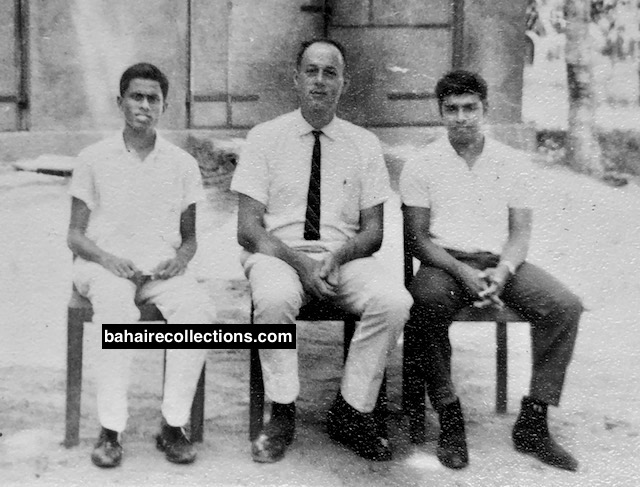
Batticaloa L-R: Yogachandra, Keith De Folo, Nihal Ramanathan
After several hours of discussions and his few visits to meet my parents, I began to digest the teachings of the Bahá’í Faith. What really attracted me at that time was that the Bahá’í community around the world was dedicated to the principles of unity of all peoples. The idea that Bahá’u’lláh, the Prophet-Founder of the Bahá’í Faith established the oneness of humankind as the Faith’s organizing principle caught my attention. His teachings specifically forbade fighting among religions, eliminating prejudices and clearly explained that the unity of all races is a precondition to the establishment of peace and justice within a country and among nations. This was it – exactly what I was looking for in life in the wake of religious atrocities I had witnessed. My parents too heard about the message of Bahá’u’lláh for the first time from Keith.
A few days passed and I kept meeting Keith again and again. By this time all my uncertainties and questions that lingered in my mind were demystified. I finally signed the Bahá’í Declaration Card that Keith gave me and accepted Bahá’u’lláh as the Messenger of God for this age. I took this step after a deep reflection on my own personal beliefs and the applications of Bahá’í teachings in my own life.
Next came my challenge. When I broke the news of my acceptance of the Bahá’í Faith to my father, I was half expecting some kind of chastisement. But to my surprise, he did not get angry or show any resentment or even disappointment. Both my parents loved the teachings of the Faith – but because of their status in their own religious community, they did not wish to accept the Faith but at the same time did not discourage me either. When they allowed me to accept the Bahá’í Faith, they did not realize that one day, I would leave them and home to a faraway place to spread the Message of my newly found Faith. It was a good decision that I had made, but in hindsight, I can see how becoming a Bahá’í was merely the beginning of an entirely new direction in my spiritual journey.
At that time, I believe I was the only Bahá’í in Batticaloa. A few weeks after Keith left, a packet, addressed to me arrived at the home to my surprise. Inside, there was a letter from the Secretary of National Spiritual Assembly of Sri Lanka welcoming me as a member of the Bahá’í community and included a few brochures on the Faith. As a follow-up, I reached out to the Bahá’í Center in Colombo requesting more materials to read. I wanted to learn more and deepen my knowledge about the Faith.
The following month I received a letter from the Secretary of National Spiritual Assembly of Sri Lanka informing that one Mr. Vasudevan Nair, a Malaysian pioneer to India would be visiting me in Batticaloa. He was a member of the Continental Board of Counselors. Later, he took a few years study break in the United States of America, where he acquired a doctorate degree in education at the University in Massachusetts. I was thrilled that another pioneer was going to pay me a visit after Keith. When Vasu as he was lovingly called arrived in Batticaloa, I met him and took him to visit my parents.
His coming to my home was timely. Sri Lanka has been mired in ethnic conflict since the country became independent from the British rule in 1948. In 1956, the government passed the Sinhala as the only official language act of the country. This was the prelude to the 1956 riots, followed by several years of ethnic violence in which thousands of civilians perished. My parents were worried about the increased fighting between the two religions and cultures. Vasu’s visit was indeed timely. I still remember he spent hours on one evening to talk on the belief of the Bahá’ís that all religions come from the same source, have the same foundation and shine the same light on humanity. Since my parents witnessed widespread violence in their own town, they became attracted to the teachings of the Faith. Vasu visited our home a few times. My parents were very comfortable with him, speaking to him in the Tamil language and was very impressed with him. They found him to be from a Hindu background. My mom was very curious to know why at a very young age, he left his Hindu Faith and became a Bahá’í. Vasu gave a lengthy explanation quoting from Hindu scriptures and connecting them with the Bahá’í Faith, especially on the Hindu prophecies on the coming of Bahá’u’lláh. Vasu then elaborated on the teachings of Bahá’u’lláh. Vasu, as always, made a great impression on my parents by simply being polite, respectful and engaging and answering all questions about the Faith. Especially, my mom liked the core teachings of the oneness of religion and mankind. I must admit that Vasu had created deep impressions in me as well with his sound and profound knowledge of the Hindu and Bahá’í Faiths. He spoke with so much conviction, and positively charged words. I dare call him a “Bahai Firebrand.”
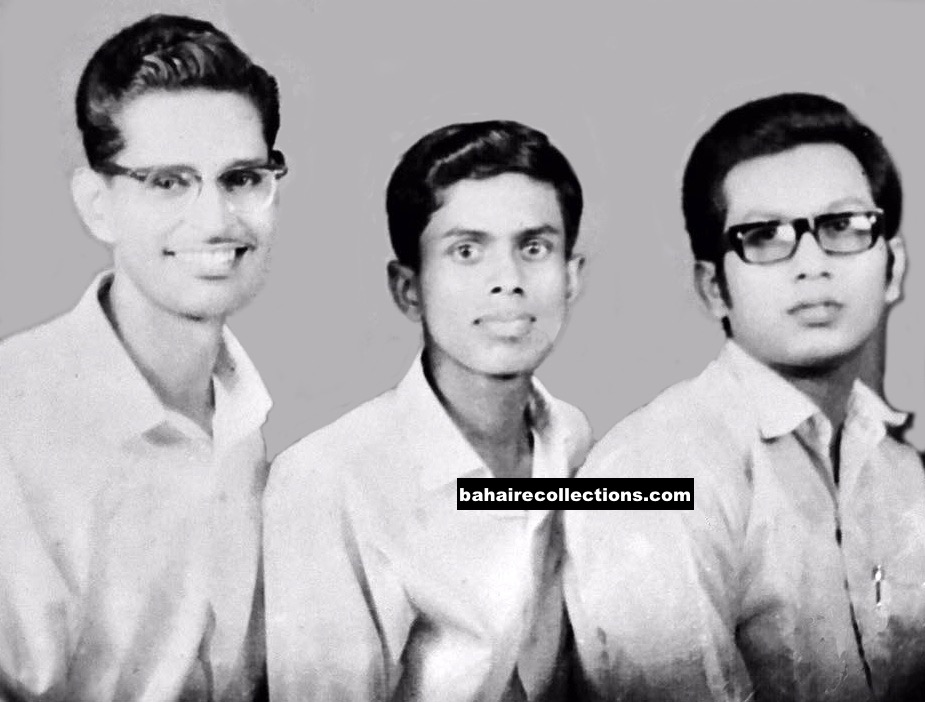
L-R: Dr. Vasudevan, Yogachandra and his brother Puwanachandra
Later, during one of my visits to the Bahá’í Centre in Colombo, I met the Secretary of the National Spiritual Assembly of the Bahá’ís of Sri Lanka. The Secretary was very calm and had the uncanny ability to comfort and give encouragement in just the right way. He spent several hours explaining the stories of early believers who sacrificed their lives for this great Cause. He showed some pictures of the earlier followers of the Báb from an old copy of the Dawn-Breakers. I never imagined that one day, I would be serving the Cause by helping in the publishing of such Holy texts and Writings in a foreign country, which I shall relate later.
In another meeting, the Secretary suggested that I should consider pioneering to Thailand and showed me a letter signed by Mrs. Shirin Fozdar, on behalf of the National Spiritual Assembly of Thailand inviting pioneers to serve in a Bahá’í school in the northeastern part of Thailand. In 1950, Mrs. Shirin Fozdar from Bombay pioneered to Singapore and in 1961, she relocated to Thailand to serve the needs of the Cause there. The entire pioneering concept was very new to me. But I liked the idea of going to a different country to help the local Bahá’í community there. We spent several hours on the power of prayers at the Bahá’í Center. “There is nothing sweeter in the world of existence than prayer…The most blessed condition is the condition of prayer and supplication.” I was given a soft cover Bahá’í Prayers book and I still cherish this after several decades.
After a few correspondences with the National Spiritual Assembly of Thailand, I decided to embark on this journey to Thailand for pioneering. It was very hard for me to leave my home town and my own community. My acceptance of this new Faith was followed by great enthusiasm and passion that I was so excited and willing to share the Message with everyone. My mother was concerned. Since having learned the essence of what I believed in she was very supportive. Even though my parents offered to help me financially, I refused. With a small amount of savings, I had, I wanted to start this journey on my own to serve the Cause of this new Messenger of God that I just embraced.
So, it was in 1969, after saying good-bye to my friends, our driver drove me nearly 200 miles from the Eastern part of this “teardrop-shaped island” to the topmost part of the island. My mother and one of my brothers accompanied the distance. It was one of the toughest moments of my life. Bidding goodbye to parents and siblings was the most difficult thing in the world for me to do. I rarely spoke to them during this trip. I was nervous but I was very hopeful. I cried not for weakness. Tears were welling up and streaming down my face as I said goodbye. I was on my way for a mission to serve the Cause of Bahá’u’lláh. I was at the beginning of a journey, not knowing the end, but there was no iota of doubt that I had nothing to worry with God within my heart. And I am so grateful to even today to my parents for allowing me to leave for pioneering. I remember reading that parents who allow their children to serve the Cause would be blessed in the next world. Now that they have passed away to the realms above, I am certain they would have witnessed the blessings from God. On my part, not a day passes without me praying for them.
I took a passenger/cargo ship to Tamil Nadu state in the Southern part of India. That was the cheapest mode of transportation to India from Sri Lanka. The ticket was about US$4.00. My instruction was to spend a month in Bangalore at Tuba Palace with the Yaganegi family. I met one of the Malaysian pioneers, beloved late Sabapathy there and spent several days with him and members of the Yaganagi family. They had a jeep at that time, and we would leave around noon time to neighboring villages and return home very late at night. That was my first experience in travel teaching and Tuba Palace was the perfect place. My stay at the Tuba Palace gave me some training to be placed well as a pioneer in Thailand. I must admit that the Yaganegi family was such an illustrious Bahá’í family that had set great examples. Each member is a spiritual giant and those who had married into this family are not ordinary believers either. It was a case of adding strength upon strength in each marriage. Several have pioneered to other parts of the world. That was my right training ground.
From India, I arrived in Penang island in the Northern part of Malaysia before arriving in Bangkok. In Penang, I spent a few weeks at home of late Counsellor Dr. Chellie Sundram and Shantha Sundram. Shantha was a dedicated soul, became known for her special qualities and deep knowledge of the Faith. Their house was always full of youth discussing teaching plans with them. Shantha expressed an outstanding eloquence and inimitable charm. I did not spend much time with Chellie Sundram during my visit to Penang as he was extremely busy with his Counselor’s work. In the little time I observed him, I found him to be unwavering in his devotion to the Faith. He was dynamic, very organized and full of energy and enthusiasm. When I moved to Thailand, Dr. Sundram visited the Thai Bahá’í community and I had the pleasure of meeting him several times.
The time I spent in Penang with the Malaysian friends gave me a new spirit and love for the Faith before I even reached my final destination. I found out that in Malaysia, where the Bahá’í community is primarily a mixture of Indian and Chinese community, all the Baha’is were ablaze with spiritual life regardless of cultural or racial background. All believers are gifted teachers, both in knowledge and passion. I admired their absolute devotion to the Faith of Bahá’u’lláh. If ever there was an experience that lifted my spirits, it was watching the Malaysian friends on teaching trips and their courage and passion for teaching. I spent several days with Mr. Yin Hong Shuen, who had returned to Malaysia in 1968 after pioneering to Sri Lanka in 1966. He was the first pioneer that Malaysia sent overseas. But he had left Sri Lanka even before I accepted the Faith. He was such a vibrant young man at that time and was happy to meet me. He asked about so many friends and communities and places in Sri Lanka. He had truly memorized them.
As part of the last leg of my journey, I took a train from Penang and arrived in Hua Lumpong railway station in Bangkok. My instruction was to look for a lady with white hair, wearing a saree – known as “Mummy Fozdar”. But I could not remember a happier moment then when I heard Mummy Fozdar’s greeting “Alláh’u’Abhá.” I was warmly welcomed by this lady, beautifully dressed in a white saree, with a matching long-sleeved blouse. I arrived in Bangkok with a backpack holding two white pants and three shirts and some local currencies equal to US$6 – but with full of joy, excitement and tons of hope.
The next evening, we took a bus trip along with Mummy Fozdar from Bangkok to a small town in the Northeastern part of Thailand, called Yasothon – my home for the next nearly two years. It was an eight-hour trip and the roads were bad. The language and the culture in Thailand were all foreign to me. I was a bit nervous.
Yasothon in 1969 was a sleepy, poverty-stricken district. I spent the next two years teaching at Santitham School in a run-down wooden building. With Mummy Fozdar, – my spiritual mother, and another Malaysian pioneer Machakalai Chandran, we trekked through the paddy fields, visiting several villages to bring the Faith to the farmers. This was our regular routine while I was living in this town.
Living in Yasothon at that time was a challenge for a young pioneer. In the beginning, I missed my friends and families back home. But, very often, working with children at the school made me at times provided me strength and joy. The Writings reminded us not to waste a fleeting moment of our lives. Going out for teaching and meeting people in the village around the Yasothon area was literally riding upon surging waves of power and courage like the tide, becoming stronger and higher.
The time I spent in Yasothon and living under the loving guidance of Mummy Fozdar, was a life-transforming experience for me – it was a great blessing and deepened me in the Faith. Mummy Fozdar inspired everyone around her and motivated us into action. She was a spiritual dynamo and was my guardian angel. She used to take me to meet Education Officers in Yasothon and the Immigration Officials in Bangkok. People loved her and everyone in the town lovingly called her “Madame.” Her qualities were pretty, charming and always sparkling. She was always elegant and dignified. I learned a lot from her on how to approach people and present the teachings.
Mummy Fozdar traveled widely throughout South East Asia for both her women’s rights projects and the Bahá’í teaching activities. I wrote an article about Mummy Fozdar, that appeared in the Bangkok World, evening edition on April 20, 1973, describing her fight for women’s rights. Part of the article reads,
“When the Muslims questioned her right to interfere with their religious practices, she retorted that their practices were not religious, and they had strayed far from the teachings of the Koran. She challenged the high priest to prove her wrong. She believed that if the Muslims in Singapore and Malaysia had followed the Koran in its correct interpretation, the malpractices of easy divorces and multiple marriages would have become non-existent.”
Visiting villages for teaching the Faith during that time taught me but one thing. The Bahá’í Faith belongs to everyone – whether you are a highly educated person or how rich you are or villagers who cannot read or write or who have not attended school at all. But they all have accepted Bahá’u’lláh’s message of the oneness of mankind. It was a wonderful and good feeling to me. Even today, I feel good about the time I spent visiting villages, making friends in the local community and learning the Thai language.
The period in Yasothon was the heyday of mass teaching. We would return to our wooden home with 50 to 60 signed declaration cards a day. We were unstoppable! One of the highlights of my pioneering in Yasothon was a trip to Chiengmai, which is about 800 kilometers away from Yasothon. I did the journey by motorcycle with a young Bahá’í traveling teacher, Mr. Chalerm Wongsalee. To get to the Northern capital and to the tribal village, we drove over very tough mountain terrain near the Burmese border. It was a journey of about four miles to reach to the village on the mountains and jungle, but it took us more than half a day to reach the tribal village with constant slipping down and pushing up on the track of the mountains.
But the outcome was so comforting and blessing for us. The tribal village chief Laluseli who was the head of about twenty villages in that area, was very friendly when we explained the purpose of our visit. They all belong to the colorful Meo tribe who lived in remote and inaccessible parts of the country. Chalerm could speak their dialect as he was originally from the Northern part. He translated for me and the message was given to the village head and his people. They loved the teachings of the oneness of mankind. The village headman on behalf of his people invited us to come again. All in all, we drove more than 1,500 kilometers on a motor bicycle.
During this trip that included another province called, Chiangrai, we were able to re-activate three old communities that had been formed several years ago, all three met during Ridván and elected new Local Spiritual Assemblies. We also helped the local communities formed two new Local Spiritual Assemblies in Wiengpapao district, in Chiangrai province. A few weeks after our return, Chalerm, 23-year- old at that time, died in a drowning accident while swimming in the Yasothorn river. The time I spent with this beautiful soul will always be fresh in my mind. Today, Santitham School is a highly respected school in the province, with large buildings with an enrollment of more than 500 students. In contrast to most of the schools in the Northeastern part of Thailand, Santitham School focuses on providing a learning environment that encourages a global vision.
During the first year or two, my mother in Sri Lanka was pretty involved in what I was doing. I would tell her all about my teaching trips to villages and meeting many Thai friends in the town. I would write to her often and send pictures of the school, Thai children and photos taken of our teaching trips. She was happy when I called her to give regular updates about what I was doing. She definitely appreciated me getting in touch with her and confirmed her belief that I was on the right spiritual path with the Bahá’ís.
It has been 26 years since she passed away. As I look back on my early life with my parents, the memories fade away, and I am left with profound admiration and the courage of my parents who gave me the permission to leave my country to arise and serve the Cause of Bahá’u’lláh.
In 1971 I was able to attend the Oceanic Conference of the South China Seas in Singapore. It was a spiritual rejuvenation in every way. My pen is unable to adequately describe the feelings that surged within me.
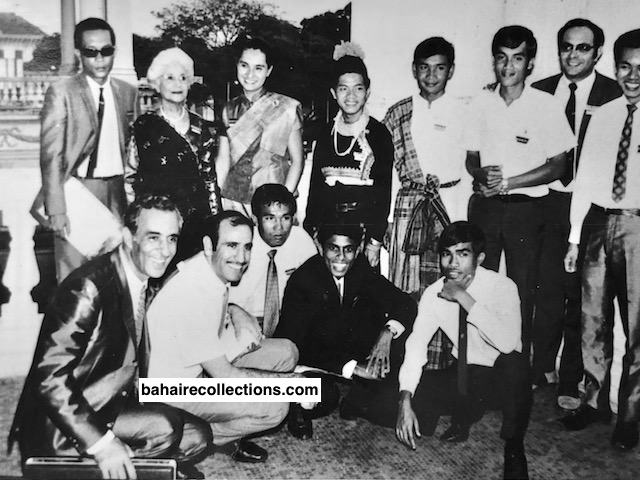
Oceanic Conference. Shirin Fozdar stands second from left. Kneeling L-R: Counselor Payman, Nasser Jaffari, and Yogachandra in the middle (dark suit)
In 1972, moving to Bangkok confirmed my belief that the teaching work should under all conditions be actively pursued by the believers to all segments of the society and the divine confirmations are dependent upon it. In Bangkok, I had the blessed bounty of serving on the Local Spiritual Assembly of Bangkok and the National Spiritual Assembly of the Bahá’ís of Thailand. I was also very active and helped Mummy Fozdar in raising fund for the Santitham School.
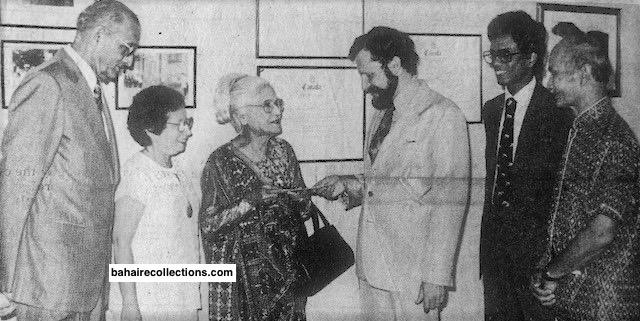
Shirin Fozdar accepting the check from the then Canadian Ambassador Fred Bild. Yogachandra is seen second from right.
While in Bangkok, I stayed at the Bahá’í Centre compound on Soi Lang Suan (“Soi” means lane in the Thai language) for a few years. I had the blessings of meeting a few Hands of the Cause of God. One of them, who visited us a few times was Dr. Raḥmatu’lláh Muhájir. Throughout the Bahá’í world, Dr. Muhájir was considered the champion of mass teaching. In 1973, I had the blessed opportunity to meet him in Bangkok. I still remember Dr. Muhájir was telling that the teachings of Bahá’u’lláh were for the whole of humanity, irrespective of their culture or race and not for the villagers only. Dr. Muhájir’s belief was teaching among the refugees would lead to teaching the native people of Thailand. Dr. Muhájir urged the Iranian pioneers to leave the materialistic Bangkok city and settle in the purer interiors so that they could start teaching the refugees who had fled from the Vietnam war into Thailand. I remember at that time pioneers like Kamal Maani, Naser and Maliheh Jafari answered his call. Nasser and Malihe are still living in Chiengmai in the Northern part of Thailand.
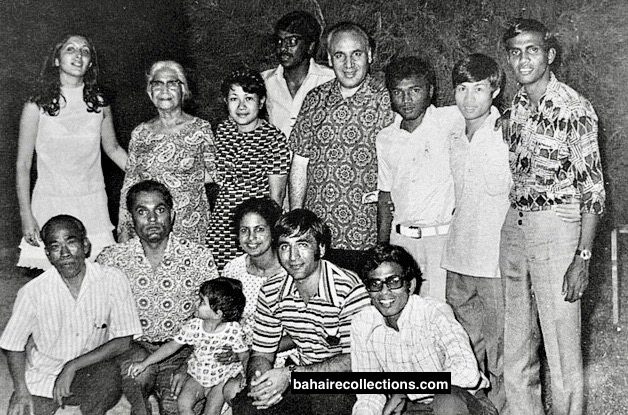
Dr. Muhajir in Bangkok. At extreme right is Machakalai Chandran. Dr. Muhajir flanked by Elangovan to his right and Govindan to his left. Mummy Fozdar stands second from left. Yogachandra is squatting at the extreme right.
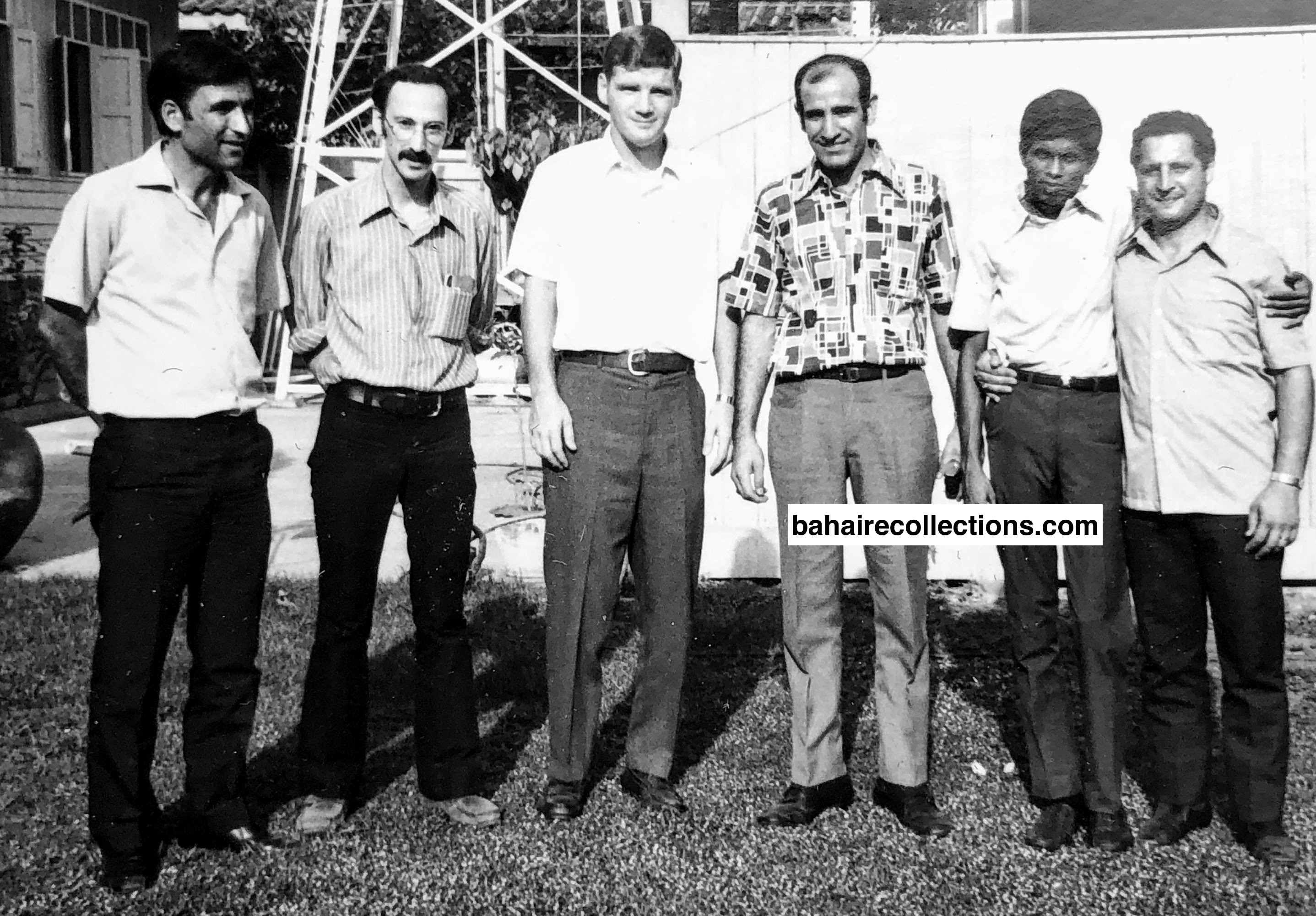
Pioneers gathered in Bangkok. L-R: Faridian Abhasakun from Iran, Victor Greenspoon from Canada, Ken Robinson from the USA, Nasser Jafari from Iran, Yogachandra from Sri Lanka and Firaydun Mithaq from Iran.
A few friends at that time living in Bangkok used to go early in the morning on Sundays to the Lumpini Park in the heart of the Bangkok city for teaching and invite friends to the Bahá’í Centre for firesides.
While living in Bangkok, many deepened scholars in the Faith have touched my heart. One of them was Yankee Leong – lovingly known as Uncle Yankee, the first believer of Malaya. Not all of us are capable of serving the Cause in the same way, but the one way every Bahá’í can spread the Faith is by example. Uncle Yankee was an example for me. He was a very humble and effective teacher. He would spend several days or even weeks in each of his visits to Thailand. He was a very successful artist. In 1968, Uncle Yankee was appointed as a member of the very first Continental Board of Counsellors of Southeast Asia and the first Chinese member of the Board. He was one of my role models and a man with countless measures of spiritual energy. He always smiled and we used to walk down to the food stalls on Soi Lang Suan to eat his famous dish “Kow Pat” (fried rice with egg) most of the days of the week.
During his visit to Bangkok in 1973, I interviewed him and wrote an article entitled, “Yankee’s doodles are ‘dandy,” in the Bangkok Post in which I described him as below:
“There is a quality in Yankee Leong’s personality that inspired “wordless” respect. With his silver hair swept loosely back from his forehead, his august appearance, gentle manners, and slow speech, wonderfully lit by metaphor and smile, one feels more in the presence of a philosopher than an artist. For 20 years before the outbreak of the Pacific War, he was the manager of a well-known dispensary in Malacca. Before that, he was with a leading firm of Chemists in Singapore. When war broke out, he was in hiding in Seremban where the Japanese tried to run him down in order to make him account for his many anti-Japanese cartoons and articles. It was during this period of hide-and-seek that he had to burn 50 of his treasured scrapbooks and that he lost 16 of his valuable paintings with which, at one time or another, he had won prizes.”
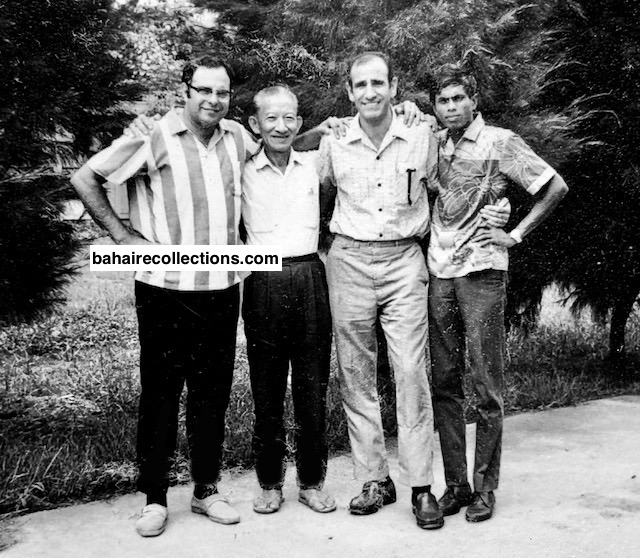
L-R: Chavalit Manjikul, a Bahá’í from Bangkok, Yankee Leong, Nasser Jaffari and Yogachandra.
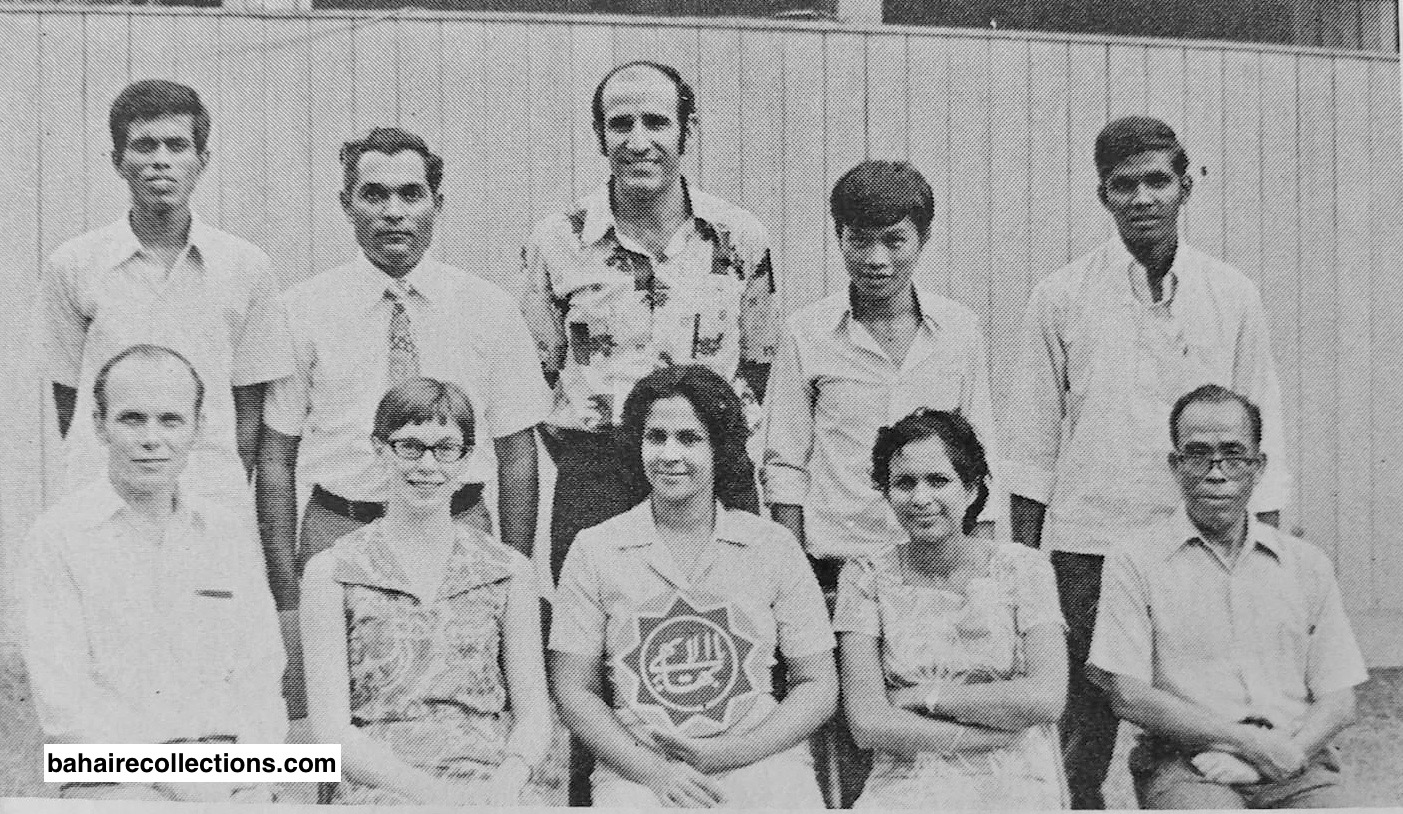
National Spiritual Assembly of Thailand, 1973. Seated in the center is Malaysian Auxiliary Board Member Betty. Yogachandra stands at the extreme left and Machakalai Chandran stands at the extreme right. Standing in the middle is Nasser Jafari.

Bangkok in mid 1970s.L-R: Yogachandra, Mr.Kamaludeen Bakhtavar from Iran, Dr. Vasudevan Nair
The Guardian of the Bahá’í Faith feels that the most effective way for the Bahá’ís to teach the Faith is to make strong friends with their neighbors and associates. When the friends have confidence in the Bahá’ís and the Bahá’ís as their friends, they should give the Message and teach the Cause. Individual teaching of this type is more effective than any other type. This was made easy for me when I joined a large corporation, Eastman Kodak Company in Thailand. My first assignment with Kodak, put me on C120 planes as a photofinishing representative, clutching my seat from one American base to another during the Vietnam War. Kodak had made an agreement with the U.S. government to provide photofinishing services to the American soldiers, so at each base, a photo counter was installed. Someone had to look after them, so Kodak assigned the job to this bright-eyed young Sri Lankan at that time. That was the beginning of my professional career. I was posted to the U.S. airbase in Udorn Thani province, located in the Northeastern part of Thailand, on the banks of the Mekong river, opposite the Laotian capital, Vientiane. I had the opportunity of travel teaching with members of the Laotian Bahá’í community, especially Faiz Yaganagi from the Yaganagi family in Bangalore, who was newly married and worked for Air America in Vientiane at that time. I used to travel to all five U.S. American bases in C120 plane on a regular basis.
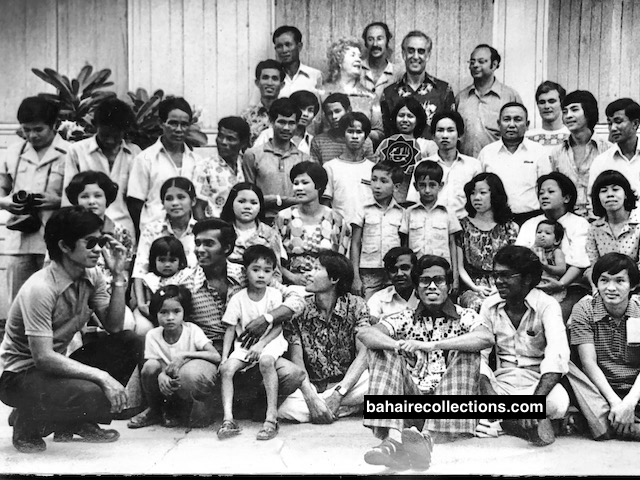
A group of Bangkok Baha’is during the mid 70’s. Back row R-L: Chavalit Manjikul, Counselor Payman, Victor Greenspoon, and Dawn Edwards, a pioneer from the USA. On the front row, Yogachandra is seen seated third from right, and on to his right is Malaysian Pioneer Machakalai Chandran and to his left is another Malaysian pioneer Elangovan.
After spending two years in Udorn, I was transferred to Kodak’s head office in Bangkok. I worked in several departments for Kodak Thailand, in accounting, public relations, advertising, and marketing communications and gradually climbed up to a senior position all by the blessings of Bahá’u’lláh.

Welcome party held for Hand of the Cause of God Mr. Collis Featherstone in a hotel in Bangkok, 1979. L-R: Mr. Featherstone, Yogachandra, Shirin Fozdar and a Thai friend.
The cornerstone of the foundation of all Bahá’í activity is teaching the Cause. So, while working at Kodak, I joined several social organizations to find ways to introduce the teachings of the Faith during the public discourse. I joined Jaycees Thailand and got involved in community projects (my service was recognized and received an award from the Thai Royal family). I joined Toastmaster International and gave several talks on Bahá’í Faith and became an able Toastmaster. I also joined the Bangkok Rotary Club to serve the local community. Each time I began to address a meeting, I turned first to Bahá’u’lláh asking for his confirmations of the Holy Spirit, then spoke whatever came from my heart.

Yogachandra receiving an award from the Crown Princess HRH Princess Maha Chakri Sirindhorn of Thailand in recognition of his community services as a member of the Jaycees Organization of Thailand.
During early 1982, I received a call from Kodak headquarters informing me of a promotion and a transfer to Athens, Greece. Eastman Kodak was setting up their Middle Eastern operations. Later I moved to Dubai, the United Arab Emirates as the Director for Marketing Communications for the Middle Eastern Operations – traveling and working with about 15 countries in the region.
I steadily climbed the occupational ladder by the Grace of Bahá’u’lláh. In 1985, I received another promotion and transferred to Eastman Kodak’s headquarters in Rochester, New York to manage marketing and communications for African, Middle Eastern, and the Asia Pacific regions. I was an expatriate for about five years in Rochester and Eastman Kodak engineered and hired a lawyer to obtain the U.S. citizenship for me.
The year 1991 was a decisive moment in my life. It was a case of “make it or break it” as what every bachelor used to say – with a sense of fear and uncertainty. That was the year I got married to Debbie. Debbie and I come from two different opposite cultures. Me from the East and she from the West. Because of two different cultures and upbringings, it could result in added challenges. I have known her for many years while I was working in Dubai. She was working at the headquarters in Rochester at that time. We had a very simple wedding in Rochester on Friday, 22 February 1991. But we entered this marriage with our eyes and hearts wide open and learned more about each other’s family. And, we had one thing in common – our Faith of Bahá’u’lláh. To be honest, I was “head over heels” with Debbie when I saw her first, but after several decades of marriage, now I consider her much more as my lifetime partner, a great friend and a strong pillar to hold my family together.
Our commitment to our marriage and our expectations of each other are often based on our shared understanding of the purpose of life – recognize the Manifestation of God for the day and spread His teachings to humanity. Because of this, we acquired the freedom to support one another lovingly, helping one another to develop virtues and to grow spiritually. Debbie has been a steady and solid rock for me. Her tireless efforts, love, and prayers helped to reach where I am today. She trained our three children Randall, Megan, and Natascha with divine exhortations. From their childhood, she instilled in their hearts the love of God and trained them to turn their faces toward the beauty of oneness.
In 1992, Eastman Kodak transferred me to Hong Kong at the headquarters of Asia Pacific Region to look after marketing activities in about 11 countries. I traveled with Kodak – a million miles. It was a blessing to meet so many Bahá’í friends in Hong Kong and other countries in Southeast Asia on a regular basis.
In 1995, after spending three years in Hong Kong, I was transferred to Denver, Colorado, to serve on a newly established Board of Memira Corporation – a joint venture with Hallmark greetings cards and Eastman Kodak. Kodak was involved in a market trial of a new product with Hallmark at that time. Later, during the latter part of 1996, I was transferred back to Kodak’s headquarters in Rochester as the Director for WW Business Development for Consumer Division. Allow me to state here in no uncertain terms that these promotions in my career were something I did not expect. They just came my way and took me places. It dawned upon me that when you take care of God’s Cause, God would take care of our Cause! And I used the position well to promote the best interests of the Cause.
As the purpose of our life, we need to find these receptive souls and teach them. It is the duty and privilege of every single Bahá’í. This made even easier for me. While working for Kodak in Rochester in New York, I was invited as a participant in the Biracial Partnerships Program, an initiative by the city of Rochester, New York. The main goal was to promote racial unity and harmony between various cultures and race. This program was coordinated by a Bahá’í and long-term resident of Rochester, New York, Robert Rosenfeld. Because trust is the first step to create and sustain positive social change, building that trust through developing deeper relationships is at the heart of this Partnerships Program. Participants are paired across race and/or ethnicity and guided through a one-year program that fosters the development of friendship and trust. It’s about people connecting.
I also managed a cross-cultural program entitled, “Embracing the Difference,” for the Fairport School District in New York, bringing families of various cultures and races together as one family. My belief in the Faith of Bahá’u’lláh was the key motivating factor for my involvement in these projects. Both my wife Debbie and I served on the Local Spiritual Assembly of the Bahá’ís of Fairport, New York.
“So putting service at the center of our lives doesn’t mean that we set aside other aspects of our lives, but rather that service is the pivot around which everything else gravitates, “a fixed centre of [our] earthly existence, a lens through which all actions come into focus …” – The Universal House of Justice, 29 December 2015.
For the many years of services of advancing better international understanding and participation rendered to the local community, I was named a recipient of the Civic Award by the Greater Rochester Metro Chamber of Commerce, New York. At work, I was the recipient of the prestigious Kodak Burnham Award — a lifetime achievement award given for excellence and innovation by Eastman Kodak Company. I also served as the Chairman and in many committees of the Rotary Club of Fairport, New York helping various local projects to serve the community and was awarded Paul Harris Fellow of Rotary International. Between all the directing, serving the Cause, managing, and long flights, I found the time to write four books: three on marketing, and one on the status of women in Asia.
Becoming a Bahá’í means, in Bahá’u’lláh’s words, to “Consort with all men in a spirit of friendliness and fellowship,” and to practice amity, concord, unity, and loving-kindness toward everyone. This is my belief and I put in practice in my professional life. My extensive travels have taken me to countries around the world. Meeting people with various cultures and members of the local Bahá’í communities gave me an intimate knowledge of customs and work ethics while providing me with strong cross-cultural management experiences in dealing with various cultures. I led cross-cultural project teams in many parts of the globe. It was a bounty for me to serve as a keynote speaker at many international conferences on Globalization and Business Management Strategies in many cities around the world.
Finally, I retired from the Eastman Kodak Company in 2004. Then a new phase opened in my life- service to humanity was added on top of the service for the Cause. In December 2004 I was watching CNN with Debbie and my daughter Natascha. All of a sudden CNN broadcasted live the horrible catastrophe to humanity- the tsunami of 2004 that hit Sri Lanka and South India. Natascha, at that time 11-years old, couldn’t bear to watch mothers crying and searching desperately for their children; dead bodies scattered all over the barren beaches. Natascha looked at us and asked whether we could go there and hug the children and help them repair their homes, schools and provide them with books and comfort. I looked at Debbie and nodded my head to say “YES.” Soon, we packed our bags and flew halfway around the world to serve children in the southern part of India and Sri Lanka. The first stop on our month and a half journey was Chennai, located on the southern coast on India. We worked very closely with Tim and Diana Schaffter, who are Baha’is to repair some of the damaged day care centers for the children of the fishermen, along the beach. Tim was the director of UNICEF at that time (now the Schaffters are living in Chiengmai). As part of the Butterfly project, we provided materials for the daycare centers, such as books, mats, and educational toys. We prayed often with the local Bahá’í community asking Baha’u’llah to help the orphaned children. Our next stop was the eastern part of Sri Lanka where several villages were completely destroyed by the tsunami. As part of our service to humanity, we visited several damaged schools and refugee camps. It was so important to help the community restore some of their normal daily activities. With the money we brought, we bought thousands of books to school libraries, hurricane lamps for fishermen and water pumps for schools, damaged by the tsunami.
After my retirement, a new chapter started. With my daughter, Natascha and my wife Debbie I started Hope is Life Foundation, a non-governmental agency, registered in New York to help raise the standard of children, especially girls in impoverished parts of the world and to eradicate illiteracy – one child at a time.
Bahá’í writings clearly say that service to others constitutes the “paramount motive of all existence,” and that service to all humanity ultimately becomes service to God. As part of our Foundation projects, we visited orphaned children during the tsunami in 2004 in Southern part of India and Eastern part of Sri Lanka, where we helped in the repairs of damaged day care centers, visited Haiti after the earthquake in 2010 and helped build a school in Port-au-Prince, opened several libraries in remote areas of several countries, helped in building toilets and dormitories for a Bahá’í administered school in Manipur, India, and offered micro-loans to guardians of orphans in Sierra Leone, Africa.

Visiting Haiti after the earthquake of 2010
In 2005, I along with my wife Debbie and my youngest daughter, Natascha moved to India. We were invited by Mr. Ganasa Murthi Ramasamy, a Malaysian believer who was the Principal of the New Era High School during that time to come and serve at the school for nearly a year as the Project Manager for the 60th anniversary celebration of the school. Debbie was involved in the expansion and restoration of the garden. There was another Malaysian believer Mr. Sandanasamy working in the Finance and Administration section of the School.
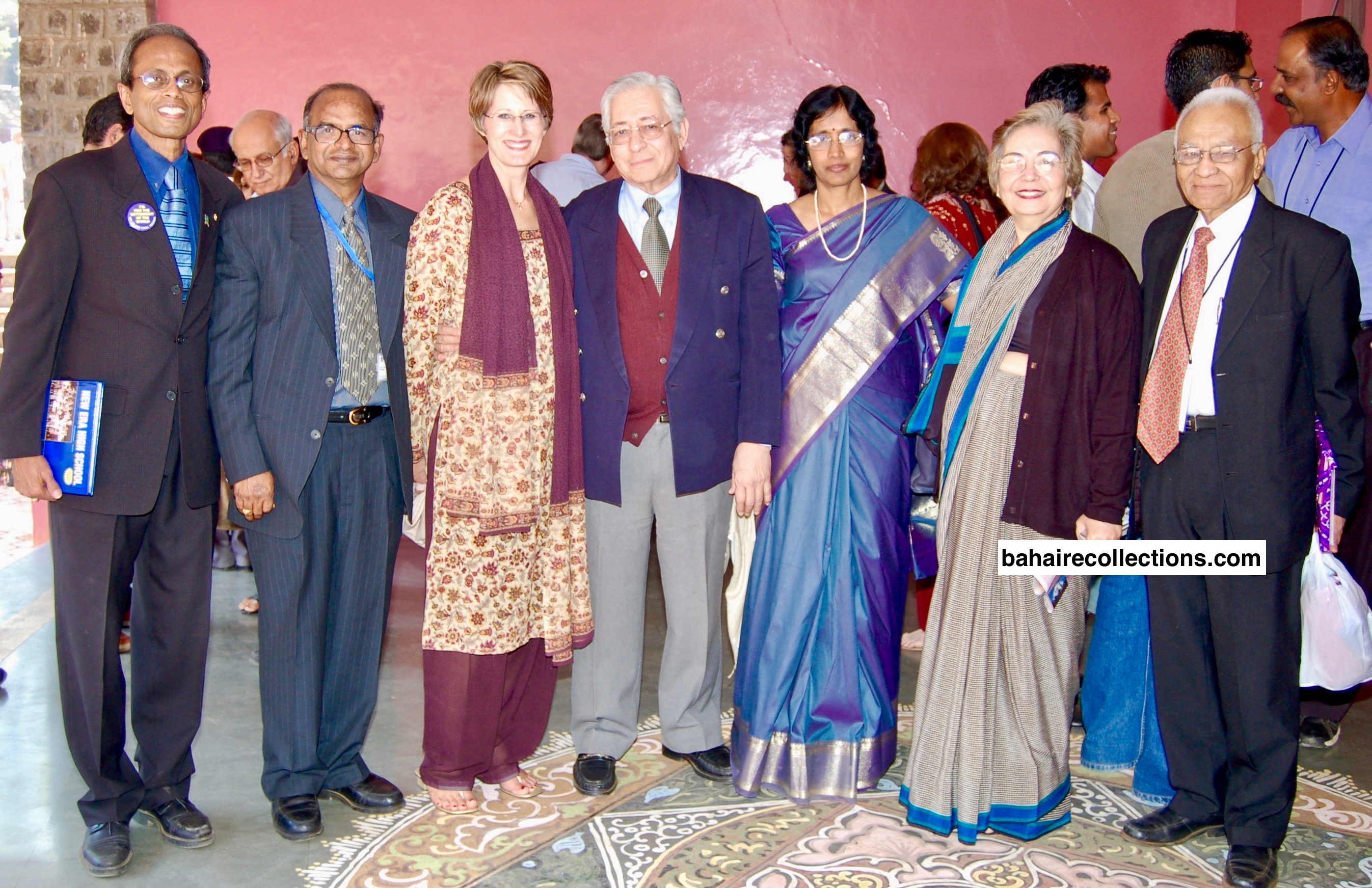
Sixtieth Anniversary celebrations at the New Era High School, Panchgani, Pune, India. L-R: Yogachandra, Ganasa Murthi Ramasamy, Debbie, Soli Sorabjee (former Attorney General of India), Panjawarnam Ganasa Murthi, Zena Sorabjee, R.N. Shah.
One of the highlights of my trip to India was meeting Vasudevan Nair again, in 2006. I had not seen him in years, and it was pure joy and a great feeling to reminisce about the days he spent with me and my family in Batticaloa. After finishing my assignment at New Era, Vasudevan, who was the Principal at the RiverDale International School in Pune invited me to take over the Vice Principal job. I gladly accepted. It was a wonderful and joyful experience for me to meet him again and work with him for nearly two years. While here Mrs. Shantha Sundram of Penang visited us. It was a wonderful opportunity to meet her with my wife Debbie and our youngest daughter Natascha.
In April 2007, I took Debbie and Natascha to Calcutta to visit the shelter home run by the All Bengal Women’s Union for teenage girls rescued from the streets by the police – reviving hope for the street girls of Calcutta. We were blessed to be a part of providing vocational training – scholarships for about eighteen girls for several years. They all had dreams to overcome the realities of their fate and become someone in their life. We were part of their hope. Each girl had a story to tell and all wanted to become contributing members of the society when they finished their education.
Later in 2007, we moved to Bangkok, Thailand and lived there till 2010. This visit was a pure joy to me. I renewed our friendship with the local Bahá’ís. I still speak and read the Thai language. It was easy for me to get along with the local people. This time, we lived in Minburi, a suburb of Bangkok. While living, we used to hold firesides every month. And also involved in several Bahá’í activities. While in Thailand, we worked closely with the Cambodian Organization for Research, Development and Education (CORDE), an NGO started by the Bahá’í community in Cambodia and helped built a school in Battambang district, where the Bahá’í House of Worship is today located. This was a community school center for the local villagers.
As the purpose of our lives, as ‘Abdu’l-Bahá says, “Service to humanity is service to God.” Throughout my professional life, I was very fortunate to develop my capacities both for my own life and for the service of humanity.
In early May 2008, Cyclone Nargis tore across the southern coastal regions of Myanmar that killed tens of thousands of people and left hundreds of thousands homeless and vulnerable to injury and disease. When we met all nine members of the National Spiritual Assembly of Myanmar who were passing through Bangkok after attending the International Convention to elect the Universal House of Justice in Haifa, we told them we would visit the Daidanaw Village. With the permission of the Master, the believers there officially changed the name of that village to ‘Abdu’l-Bahá Village. That became the first all-Bahá’í village in the world outside the Cradle of the Faith. We could not get the visa to visit Myanmar since USA citizens were not allowed during the first few months after the hurricane, but with the invitation of the International School in Yangoon whose principal was known to us, we were able to get the visa in 2009. The trip is still fresh in my mind. The village is about a three-hour ride across unpaved, bumpy roads from Yangon. Debbie sat in front with the Treasurer who drove the van. In the back, Natascha and I sat with the Secretary, Vice Chairman and Chairman of the NSA of Myanmar. The National Spiritual Assembly and members of the community welcomed us and showered us with love. They appreciated our visit that we came all the way to show love and care for the local community. We visited the Bahá’í school, the home for the aged and met members of the community.
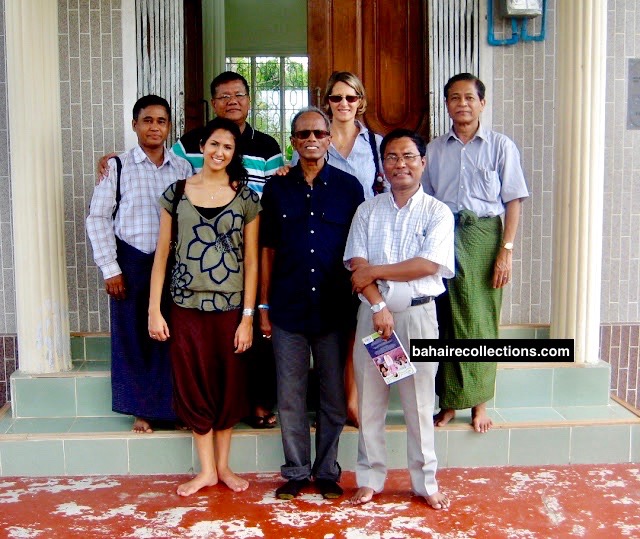
Daidanaw Village, Myanmar. Front row L-R: Natascha, Yogachandra, U Winn Hlaing, Secretary of the National Assembly. Back row L-R: U Tin Win, Chairman, U Shwe Thee, Treasurer, Debbie and U Tunyi, Vice Chairman
We returned back to the States in 2010, this time to Ithaca, New York, so that my dear wife Debbie could take care of her dad whose health was deteriorating at that time. It was a blessing for Debbie and me as well for him to spend his last few years with us. He passed away peacefully to the realm above in 2014. Coming back to New York and taking of care Debbie’s dad brought us together even closer.
In Ithaca, New York, we continued with our Foundation work. Hope is Life Foundation is organized around the belief that all humanity belongs to the same family. We believe that the entire world is a composite body; therefore, when one part suffers, the rest of the body will feel its consequences. Our work continued in Haiti and Manipur India. Our efforts are to seek to promote the social and material well-being of people of all walks of life, whatever their beliefs or background. Such efforts are motivated by the desire to serve humanity and contribute to constructive social change.
In 2017, in February, we were invited – after going through several interviews to come and serve at the Bahá’í National Center in Wilmette, Illinois. When I received this message, I was spending a month in Sri Lanka with my youngest daughter traveling in various cities. That was a pleasant surprise and a blessing for us to settle down in Wilmette, closer to the House of Worship.
Today, I work as the General Manager of the Bahá’í Publishing Trust under the National Spiritual Assembly of the Bahá’ís of USA and Debbie works at the Fund Development Office as the Senior Administrative Assistant. Together with a dedicated team, we publish and distribute Bahá’í literature and other related items that support the all-important work of teaching and study of the Cause as well as serve the wider needs of the American Bahá’ís.
After spending so many years of working and serving the Cause in a few countries, it gives me joy and peace today, working for the Bahá’í Publishing Trust, which is an organization that diffuses the Word of God through the dissemination of the sacred and authoritative texts to the greatest possible number of souls. Our office is situated a few blocks away from the Bahá’í House of Worship, where ‘Abdu’l-Bahá dedicated the site in 1912. I walk to this mother temple of the West, just beautiful, unlike anything I have ever seen in my life to pray, meditate and find peace.
Finally, in 2018, a major event brought my journey to reach another milestone – my second pilgrimage to Holy Land with Debbie, first being in 2004. With great humbleness and devotion, we climbed the terraces in Mt. Carmel in Haifa, Israel. We walked in the footsteps of the prophets and remembered my parents. All around the Shrine of the Báb were beautifully landscaped terraces, exquisite gardens, plants, colorful flowers with sweet scents and fountains of flowing water. In the shrine of Bahá’u’lláh, overwhelmed by the undeniable spirit of holiness, I said prayers for my parents who gave me the strength and courage to investigate on my own to embrace the Faith of Bahá’u’lláh. On my part, I thanked Bahá’u’lláh for guiding me into His Cause and giving me several paths to serve.
Throughout my journey, I found a good balance between my successful career and service to the Cause of Bahá’u’lláh. Bahá’u’lláh has guided me in every task I undertook – whether in my career or in my service to humanity. As the Bahá’í writings clearly say that service to others constitutes the “paramount motive of all existence,” and that service to all humanity ultimately becomes service to God. My Faith gives me purpose and fulfillment.
I started my life in Sri Lanka and set out to serve the Faith overseas. Today I am finally in Wilmette, Illinois, USA. From the day I accepted the Faith I submitted myself to His will. My life has been richly blessed in accordance to His will. I am still like a leaf that is carried by the wind, with no will of its own. My life is a Destiny that He wrote.
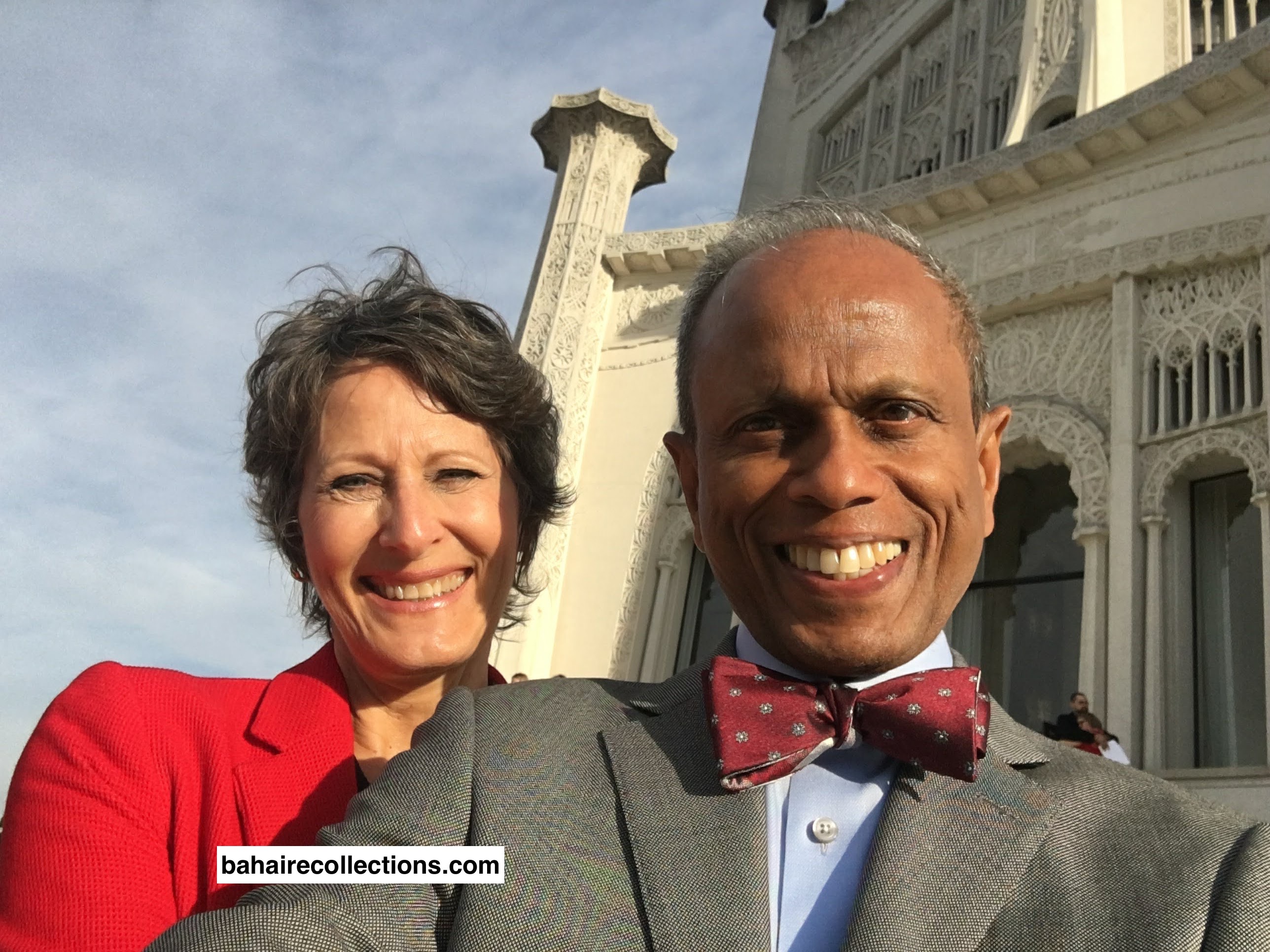
Debbie with Yogachandra
Nat Yogachandra
Wilmette
United States of America
31 May 2019
Copyright©bahairecollections.com
11 thoughts on “A DESTINY THAT HE WROTE”
Unbelievable your story Yoga. What a bounty and blessings to serve humanity in so many parts of the world from the day you accepted the Faith and decided to pioneer to Thailand.
The photos brought back memories of the early Baha’i spiritual giants in Thailand, Malaysia and your encounters with them are very inspiring.
Thanks Yoga.
Wong Meng Fook
Singapore
Dear Mr. Yogachandra,
Thank you so much for posting this story today. As I woke up this Saturday morning in cold Sydney Australia winter, I was disappointed that I had missed my dawn prayer by sleeping in. Then I read this post from you. This has inspired me since I missed my dawn prayers from the warmth of my bed, I will go to the Baha’i Temple in Sydney and say my prayers there. I will for sure remember all the pioneers and travel teachers around the world and one for yourself!
Thank for your services in His cause!!
Fahimeh “Fay” Walker
Sydney
Australia
What an inspirational story of your life long service! I sit here reading every sentence and paragraph, and am truly lost for words!
Thank you, thank you for sharing the highlights of your journey, from Sri Lanka (Ceylon) to America, spanning decades of adventure and teaching the Faith in love and unity, with your life as a shining example ,always. God bless you and family for all eternity.
Do come and visit the House of Worship in Sydney if and when you can.
Leong Ho San
Wollongong
AUSTRALIA
Dear Mr. Yogachandra,
What an inspiring story – which I have thoroughly enjoyed. This is indeed a story of success both spiritually and materially. I always recall what the late uncle Lim Kok Hoon said, “When the call came, I took care of the Cause of God; and when my time came, God took care of my cause.” It is the greatest testimony that along with that spiritual journey, tests and difficulties rain down but at the same time, the Blessed Beauty sends you heavenly assistance and courage to overcome them – after which the reward awaits!
“I implore Thee, O my Lord, by Thy name the splendors of which have encompassed the earth and the heavens, to enable me so to surrender my will to what Thou hast decreed in Thy Tablets, that I may cease to discover within me any desire except what Thou didst desire through the power of Thy sovereignty, and any will save what Thou didst destine for me by Thy will.” – Bahá’u’lláh, Prayers and Meditations, p. 241.
“He doeth as He doeth, and what recourse have we? He carrieth out His Will, He ordaineth what He pleaseth. Then better for thee to bow down thy head in submission, and put thy trust in the All-Merciful Lord.” – ‘Abdu’l-Bahá, Selections from the Writings of ‘Abdu’l-Bahá, p. 320.
It is indeed a destiny He wrote. God bless.
With Loving Bahá’í Greetings,
Velayutham Gopal
Phnom Penh – Cambodia
It’s a joy and pleasure to know the humble spiritual journey of another fellow Sri Lankan in His path of service. Very encouraging and inspiring. Indeed, when we surrender our will to the will of Baha’u’llah, He guides every step we take with such divine wisdom and guidance.
I have learnt a great deal by reading this fascinating story. Furthermore, I would like to thank the creator and admin of this awesome Baha’i Recollections blog where true servants are able to share their spiritual experiences guided by divine mysteries. This is a blog that records and preserves the history of the Faith in various parts of the world.
Thank you and may the blessings of Baha’u’llah shower upon all of you in His path of love and service.
Shamilar Shammi
Colombo
Sri Lanka
This is a remarkable story of a wonderful believer serving the Cause and humanity. It was a pleasure meeting him recently
Dr. Leong Yow Peng
Subang jaya
Malaysia
That was a wonderful and inspiring story!
Pahlaj
Germany
Reading ‘A DESTINY THAT HE WROTE’ clearly illustrates the effects of teaching the Cause. Without hesitation, this success even in material life is a reward from Bahá’u’lláh.
You have never stopped to carry out your duties as a pioneer. You did not sit on your laurels but dedicated and made many sacrifices in the pioneering field.
Kamachee Martel
Lesotho
Africa
I have just finished reading the write up by Yogachandra whom I had never met before. But his story is very interesting and inspiring as chronicled as a great pioneer. The story carries a message that once you set up to fulfill the mission of God, you would unasked get the blessings – both spiritual and materialistic. And this is very well told.
The greatness of this story as any other is the rare and unseen photographs that are not only supportive of the story lines, but are catchy as well. I recognize quite many Bahai friends in the pictures, like Mummy Fozdar, Betty, Yankee Leong, Firaydun, Vasudevan, Payman, Dr. Muhajir and others.
Thank you dear Yogachandra i for sharing such an interesting write up.
Lily Chinniah
Kuala Lumpur
Malaysia
Dear Nat,
Thank you for sharing your pioneering experiences. I did not know about all that you have done in your life as a steadfast and active teacher of the Cause. We spent time together at several Baha’i activities in Hong Kong but I did not know of your amazing story to this extent. You have such a humility about you Nat. I am truly impressed. I remember when your daughter Natasha was born in Hong Kong. and she shares the same age with our daughter Helena.
Its a great service both you and Debbie are doing. Wish I had spent more time with you guys while in Hong Kong and heard of all these marvelous accounts that you have just shared. Its good you have recorded them here in this blog for all to read
Ruth Macaffer
Seremban
Malaysia
This is yet another inspiring and interesting read.
As I had been busy with other work, I was waiting for the right timing to read this. I read today in one go,completing at 2 am. Couldn’t agree more to what has been written by Mr. Yogachandra.
Many thanks for this great story Mr. Yogachandra.
Ho Shih Li
Kuala Lumur
Malaysia